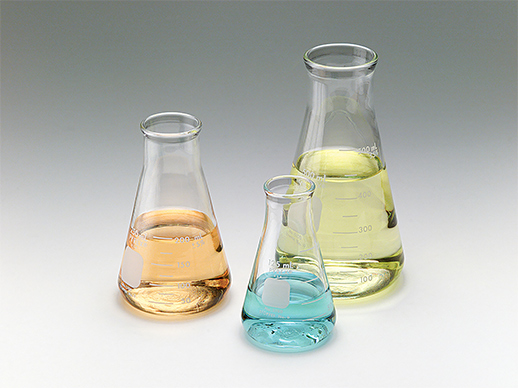| Composition: | Polyoxyethylene, polyoxypropylene block polymer |
| English name: | Propylene glycol block polyether |
| Type: | Non-ionic |
| SPEC. | Vist Insp (25℃) |
Average molecular weight |
Viscosity (25℃ CPS) |
Cloud point (1% aqueous solution) |
Melting point (℃) |
Water wt (%) |
pH (1% in water) |
HLB |
|
L31 |
Clear liquid |
1100 |
200 |
37 |
— |
≤1.0 |
5.0~7.0 |
3.5 |
|
L35 |
Clear liquid |
1900 |
320 |
70~85 |
— |
≤1.0 |
5.0~7.0 |
18.5 |
|
F38 |
White solid |
5000 |
— |
>100 |
45 |
≤1.0 |
5.0~7.0 |
30 |
|
L42 |
Clear liquid |
1630 |
250 |
37 |
— |
≤1.0 |
5.0~7.0 |
8 |
|
L43 |
Clear liquid |
1850 |
310 |
42 |
— |
≤1.0 |
5.0~7.0 |
10 |
|
L44 |
Clear to yellowish liquid |
2200 |
140-190 |
45~60 |
— |
≤0.5 |
5.0~7.0 |
12 |
|
L45 |
Clear liquid to paste |
2400 |
— |
75~85 |
— |
≤1.0 |
5.0~7.0 |
15 |
|
L61 |
Clear to yellowish liquid |
2000 |
100-150 |
35~45 (10%in25%BDG) |
— |
≤0.5 |
5.0~7.0 |
3 |
|
L62 |
Clear to yellowish liquid |
2500 |
180-230 |
35~45 (10%in25%BDG) |
— |
≤0.5 |
5.0~7.0 |
7 |
|
L63 |
Clear liquid |
2650 |
550 |
34 |
— |
≤1.0 |
5.0~7.0 |
11 |
|
L64 |
Clear to yellowish liquid |
2900 |
200-250 |
55~65 |
— |
≤0.5 |
5.0~7.0 |
13 |
|
P65 |
Milky paste |
3500 |
— |
75~85 |
29.5 |
≤1.0 |
5.0~7.0 |
15 |
|
F68 |
White flake solid |
8350 |
|
>100 |
50 |
≤1.0 |
5.0~7.0 |
29 |
1. As a low-foam detergent or defoamer, L61, L64, F68 are used to prepare low-foam, high- detergent synthetic detergents. L61 is used as a defoamer in the paper or fermentation industry. F68 is used as a defoamer during blood circulation in an artificial heart-lung machine to prevent air from entering.
2. Polyether has very low toxicity and is often used as a drug excipient and emulsifier. It is often used in the mouth, nasal sprays, eyes drops, ear drops, and shampoos.
3. Polyether is an effective wetting agent, can be used for fabric dyeing, photographic development and electric crossing acid margin. More sugar can be obtained in the sugar factory using F68 due to increased water permeability.
4. Polyether is a useful antistatic agent, and L44 can provide long-lasting electrostatic protection against synthetic fibers.
5. Polyether is used as a dispersant in emulsion coating. F68 is used as an emulsifier during the polymerization of polyvinyl acetate emulsion. L62 and L64 can be used as pesticide emulsifiers, coolants and lubricants in metal cutting and grinding. It is used as a lubricant when rubber is vulcanized.
6. Polyether can be used as crude oil demulsifier. L64 and F68 can prevent the hard-scale formation in oil pipelines and recover secondary oil.
7. Polyether can be used as a papermaking auxiliary, and F68 can effectively improve the quality of the coated paper.
8. F38 can be used as an emulsifier, wetting agent, defoamer, demulsifier, dispersant, antistatic agent, dust collector, viscosity modifier, foam control agent, leveling agent, gelling agent, etc., for the production of agricultural chemicals, cosmetics, drugs, it is also used in metal processing and cleaning, pulp and paper industry, textile processing (textile, finishing, dyeing, soft finishing), water quality treatment. It is also used as a bleaching aid.
9. P65 is mainly used in the wool industry, as a wool protection agent. Adding about 0.3% to the wool carbonization process can reduce wool scale damage, enhance the strength of single fiber by 10%, and reduce the yarn breakage rate by 10%.
200KG iron drum/plastic drum, 50KG plastic drum, IBC, flexitank, tank car.
This series of products is non-toxic, non-flammable, according to the general chemical storage. It is transported as non-toxic and non- dangerous goods, stored in a dry and ventilated place, storage period of two years.
Block polyether propylene glycol, we can also call it block polyether or propylene glycol block polyether. The CAS number is 9003-11-6.
It mainly has three models, polyether L61, polyether L62 and polyether L64(block polyether L61, block polyether L62, block polyether L64).
The numerical differentiation within the Polyether L series primarily reflects variations in the ratio of hydrophilic segments (polyoxyethylene, PEO) to lipophilic segments (polyoxypropylene, PPO) within the molecule. This ratio determines their solubility in water, emulsifying properties, and application scope.
Block polyether L61 possesses the lowest polyoxyethylene content, rendering its molecular structure predominantly lipophilic. While exhibiting limited solubility in water, it demonstrates exceptional performance in oil-based systems. It is particularly well-suited as a defoamer or oil-phase emulsifier, commonly employed in metalworking fluids, lubrication systems, or industrial formulations requiring foam suppression.
Block polyether L62 incorporates a higher proportion of hydrophilic segments compared to L61, achieving a better balance between lipophilic and hydrophilic properties. It can disperse in water while retaining some defoaming capability, making it suitable for applications requiring both emulsification and defoaming, such as pesticide emulsifiers, textile auxiliaries, or certain cosmetic formulations.
Block polyether L64 contains a higher proportion of polyoxyethylene, rendering it the most hydrophilic with optimal water solubility and emulsion stability. It forms stable O/W emulsions in oil-water systems, making it particularly suitable for pharmaceutical, cosmetic, and food-grade emulsification applications where high uniformity and long-term stability are paramount.
